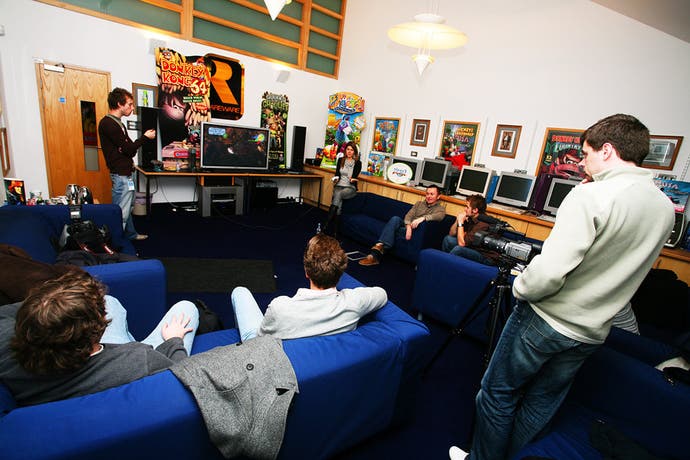The Kids Are Alright
TT Games, Rare and Insomniac discuss the art of developing games for children.
This week marks the launch of Eurogamer's dedicated kids site, Megaton.co.uk. Check it out and if you're a parent, we're interested in your feedback - either via the contact form or on the Editor's blog. Thanks!
Becoming a parent changes your perception of a lot of things. Some of these are obvious - you only realise how many terrifyingly sharp corners your house has once there's a two-foot maniac running around it, for example. But others sneak up on you. Like the way parenthood makes you reappraise the games you play, how you play them and why you started playing them in the first place.
That's what happened to me when my son first picked up a joypad at the age of three and started smashing Burnout cars into one another. I realised that even though I'd spent most of my life playing games, I'd taken a lot of them for granted. I could recall early encounters with home computers and arcade cabinets, but I drew a blank on specific details. Just like we can't remember how we learned to speak, I found it hard to pinpoint how it felt to take my first faltering steps in the digital domain. Now, as a dad, I was getting a second chance to see how we first interact with the last major new media form of the 20th century.
There's a whole world of subtle subtextual cues and nudges at work in gaming, every bit as advanced as the supermarket psychology that draws you down every aisle when you just popped in for some milk, only instead of brainwashing you into buying a different brand of shampoo it's steering you through an imaginary world and, hopefully, making sure you love every minute of it.

It's as a kid that these interactions are at their most potent, and their effects the most obvious, since it starts with a blank slate. TV and print are hard to avoid, their ubiquity making it all but impossible to determine when exposure begins. For gaming, where interactivity is the defining feature, the connection is only made when you pick up the joypad and start pressing buttons.
Watching my son play over the years, several things stand out. The first is that early fixation on Burnout. Like a lot of boys, he had a thing for cars, but this was clearly different to brumming Matchbox toys around the living room (though he did plenty of that as well, in case it sound like I've kept him trapped in some weird psychiatric digital study). The striking thing was the immediacy of it. Press this button and the car zooms forwards. That was awesome enough.
Then he learned to press another button to go backwards. Instinctively, he pressed another button. The car disappeared. He'd switched to the in-car view, but for him it was like magic. Not only that, it was empowering. He was in control of something on the telly. As adults, with our knowledge of game engines and videogame traditions, it's easy to forget how powerful that interaction can be. To a child, it offers the freedom of a vivid dream in the tangible real world.
As his familiarity grew over the years, I sat him down with games that I presumed would suit his age. I soon realised that the things I took for granted as someone with decades of gaming experience and years of virtual trial-and-error to fall back on meant nothing to someone coming to the medium as a neophyte.

Genre standards like "double jump" had no context, and watching him become frustrated with modern 3D platform games was like witnessing someone with no feeling in their limbs and no depth of vision try to navigate an obstacle course. While I could easily guide Crash Bandicoot from one tree stump to another, for him there was no feedback, no sensory context for the actions he had to perform. He was learning to walk all over again.
It was LEGO Star Wars that provided the breakthrough. At the time, I suspected it was because practice and experience was paying off, but I soon came to realise that it was because the game made no assumptions about its players. This was a game that understood that kids progress in increments, and made sure to reward them at every step. Like a surrogate gaming parent, LEGO Star Wars taught my son how to play. Ever since then, I've been fascinated by children's games and how they work (or, more frequently, why they don't).
"We aspired to make a game that was accessible to the widest possible audience, but delivered real depth, linked to the collection of characters and a continual expansion of the player's powers," says Jonathan Smith, head of production at Traveller's Tales and the director of the LEGO games, when I quiz him on the design ethos that so effortlessly won my son over.
"It's closely related to our belief that players have the most fun when they come to believe that the world around them is full of secrets which will reward exploration. That encourages experimentation and creative play. We've continued to elaborate on that framework in various slightly different ways for each subsequent title.

